*This post may contain affiliate links. Read more »
This recipe for Yamagobo is natural, quick as heck to make, doesn’t require any hard-to-find ingredients, and is so easy you can do it blindfolded.
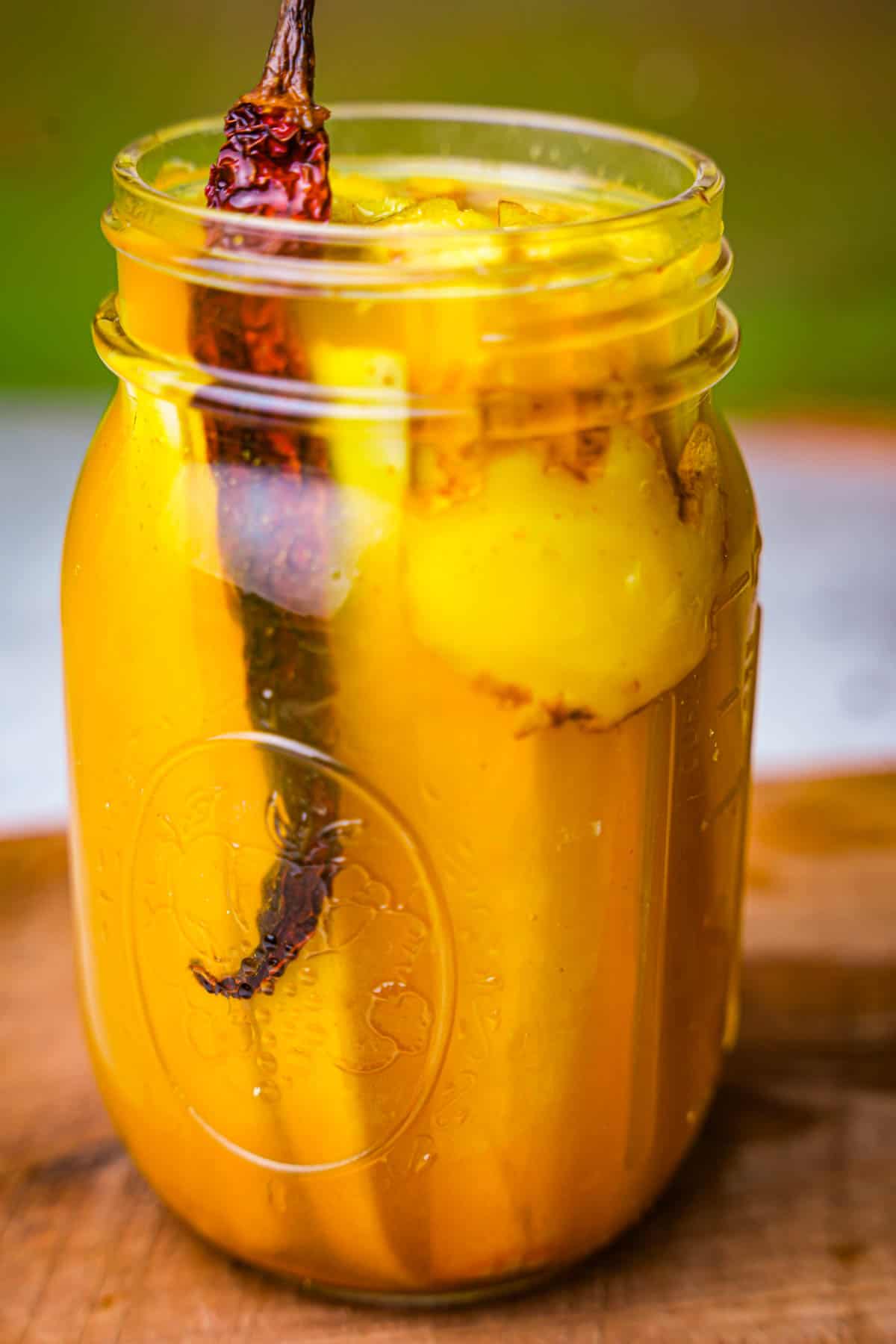

Enter your email & I'll send it to your inbox. Plus, get great new recipes from me every week!
By submitting this form, you consent to receive emails from Cinnamon Snail.
Yamagobo, also known as pickled burdock root, is a delightful Japanese delicacy that offers a unique and vibrant taste. Not only is this recipe incredibly simple to prepare, but its versatility allows it to enhance a wide range of dishes.
Burdock root is a long, slender vegetable with a mild, slightly astringent, earthy taste. When pickled, it takes on a tangy and slightly sweet flavor, making it a fantastic accompaniment to freshen up a variety of dishes. Its unique texture adds a delightful crunch, giving each bite a satisfying bite. I serve it alongside my tofu katsu, vegan bulgogi, or a steaming hot plate of kimchi fried rice, or stir-fried udon noodles. It's also nice as part of a simple, healthy salad, dripping with Japanese Goma Dressing.
Elevate your dishes with the tangy and sweet flavors of pickled burdock root, and let your taste buds embark on a delightful journey. Get ready to savor the vibrant and refreshing notes that Yamagobo brings to every bite!
Jump to:
🥰Why you'll adore this pickled burdock root recipe
⏰ Speedy Preparation: This recipe offers a quick and hassle-free way to create pickled burdock root. With minimal prep time and simple instructions, you can have a flavorful condiment ready in no time.
✅ Super-Well Tested: Like all of my vegan Japanese recipes, this pickled burdock root has been tested by hundreds of recipe testers of all skill levels from all around the world.
🥗 Nutritional Benefits: Burdock root, the main ingredient in Yamagobo, comes with several nutritional benefits. It is a rich source of fiber, antioxidants, and essential minerals like potassium, iron, and manganese. Additionally, burdock root has been traditionally used for its potential anti-inflammatory and detoxifying properties.
🙅♀️🔬📡 No Special Equipment or Skill Required: You don't need any obscure kitchen grear or advanced culinary skills to make this recipe. The ingredients are easily accessible, and the steps are straightforward, making it an ideal choice for both novice and experienced home cooks.
🍚 Versatile Pairing Options: Whether you're serving traditional Japanese cuisine, semi-wacky Japanese inspired dishes like this vegan sushi bake, stir-fries, grain bowls, salads, or even vegan fried chicken, pickled burdock root adds a refreshing crunch and a burst of flavor.


👩🍳 Learn to make the BEST vegan Japanese food
This 5-day guide to my most popular Japanese recipes is 100% FREE, & you'll love the actual heck out of it 🥰
🌶️ Ingredients for pickled burdock root
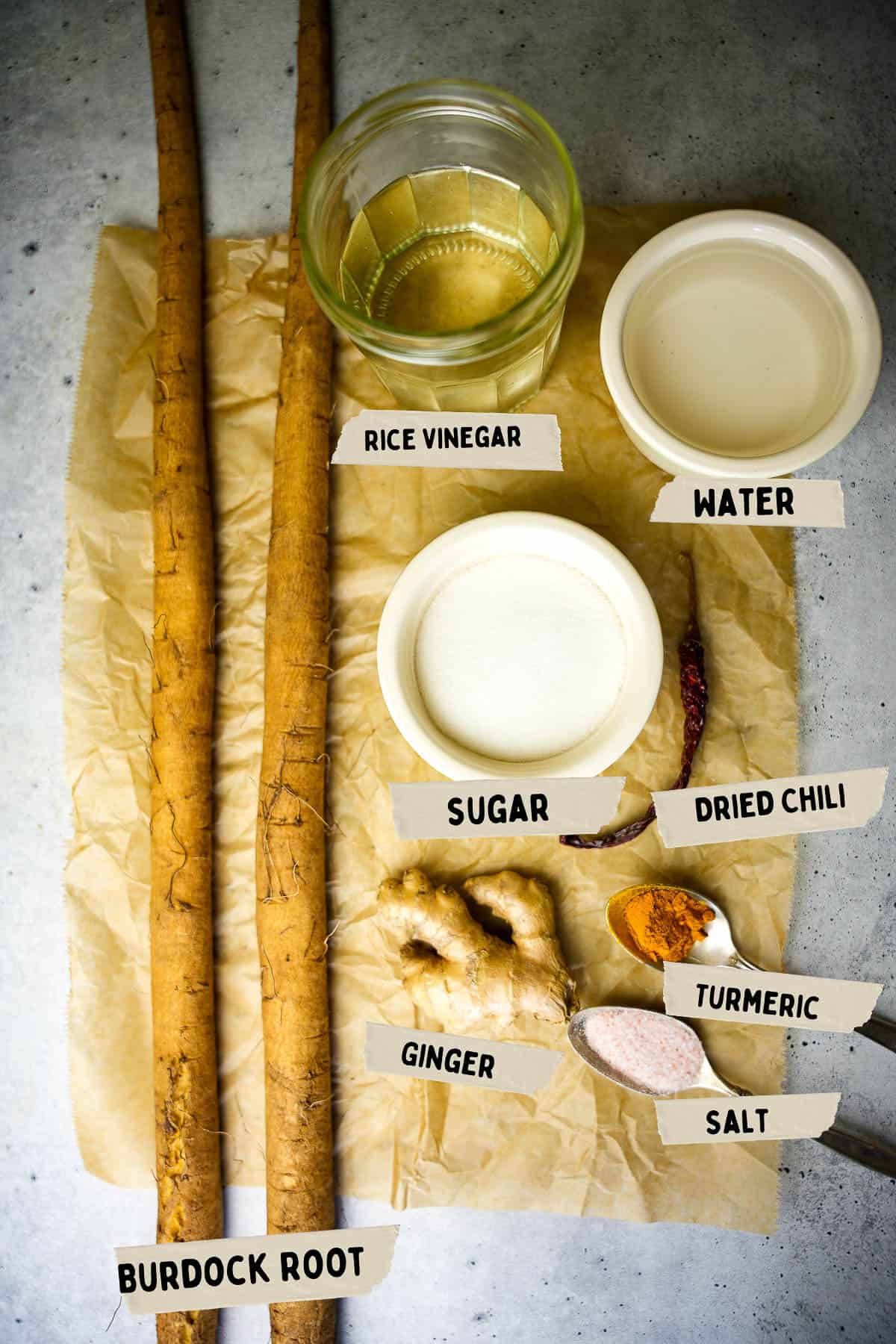
Burdock root
Burdock is available at many health food stores and asian food markets. Seek out burdock roots that are firm, with a smooth and unblemished exterior. The roots should have a vibrant, earthy aroma, indicating their freshness. Look for roots that are medium to large in size, as they are easier to work with and yield more strips for pickling. Avoid burdock roots that feel soft, spongy, or have signs of mold or discoloration. Remember, the fresher the burdock root, the better the pickling results.
Rice vinegar
The acidity of rice vinegar is essential to pickling. If you don't have rice vinegar on hand, you can substitute it with just basic-ole’ white vinegar, or apple cider vinegar. These alternatives will provide a similar level of acidity.
Turmeric powder
Turmeric is a vibrant yellow spice commonly used to add a beautiful golden hue to dishes, including pickles like Yamagobo. If you want to make the yamagobo more orange, consider using carrot powder in place of turmeric.
Dried red chilies (optional)
For those seeking a subtle touch of heat and smokiness in their Yamagobo, consider using dried red chilies to elevate the flavor. Ancho chilies, with their mild and fruity notes, are an excellent choice, imparting a subtle smokiness to the pickled burdock. If you prefer a bolder kick, try using dried arbol chilies, known for their fiery heat and vibrant red color. Alternatively, guajillo chilies or hatch chilies like I use in my red chili sauce recipe can add a rich and complex flavor profile, with hints of sweetness and earthiness. Experiment with different dried red chilies to find the perfect level of spice and flavor that suits your palate, or leave them out completely.
Sugar
Sugar plays a crucial role in balancing the flavors and enhancing the overall taste of Yamagobo. It adds a touch of sweetness that complements the tangy and savory elements of the pickled burdock root. However, if you prefer to explore healthier alternatives to traditional granulated sugar, there are a couple of options to consider.
One alternative is coconut sugar, which is derived from the sap of coconut palm flowers. It has a rich, caramel-like flavor and can be used as a 1:1 substitute for granulated sugar. Another option is maple sugar, which is made by evaporating the sap of maple trees. It imparts a subtle maple flavor and works well in pickling recipes like Yamagobo.
*See the recipe card at the bottom of the page for exact quantities, nutritional info, and detailed cooking directions.
🤯Variations
When Yamagobo is prepared in the traditional way, it is bright orange from either carrot powder or artificial coloring (yuck!). My recipe is a little more practical using turmeric powder, which most people already have on hand. However, there are a couple of other things you could use to color it in different appealing shades.
When it comes to adding color and flavor to Yamagobo, there is a wonderful array of natural whole foods that can be used. Here are a few options to consider:
- Beets: For a vibrant pink or reddish hue, try incorporating grated or juiced beets directly into the pickling brine. They lend a beautiful natural color to Yamagobo, creating an eye-catching visual appeal.
- Carrots: Adding shredded carrots to the pickling mixture can introduce a lovely orange hue to the Yamagobo. The natural sweetness of carrots complements the tangy notes of the burdock root, creating a harmonious blend of flavors.
- Shiso Leaves: Shiso leaves, also known as perilla leaves, can contribute a vibrant green or pink hue (depending on the variety) to Yamagobo. These leaves have a distinct flavor, slightly minty and reminiscent of basil, which adds a refreshing and herbaceous note to the pickled burdock root. This is the same herb that lends umeboshi plums and plum vinegar their gorgeous pink color.
- Citrus Zest: Incorporating the zest of citrus fruits like oranges or lemons can lend a citrusy aroma and a burst of tangy flavor to the Yamagobo. It provides a refreshing twist and brightens up the overall taste profile.
📖 How to Make yamagobo
You can follow along with this easy step-by-step guide, or the easy-to-print recipe card at the bottom of this blog post.
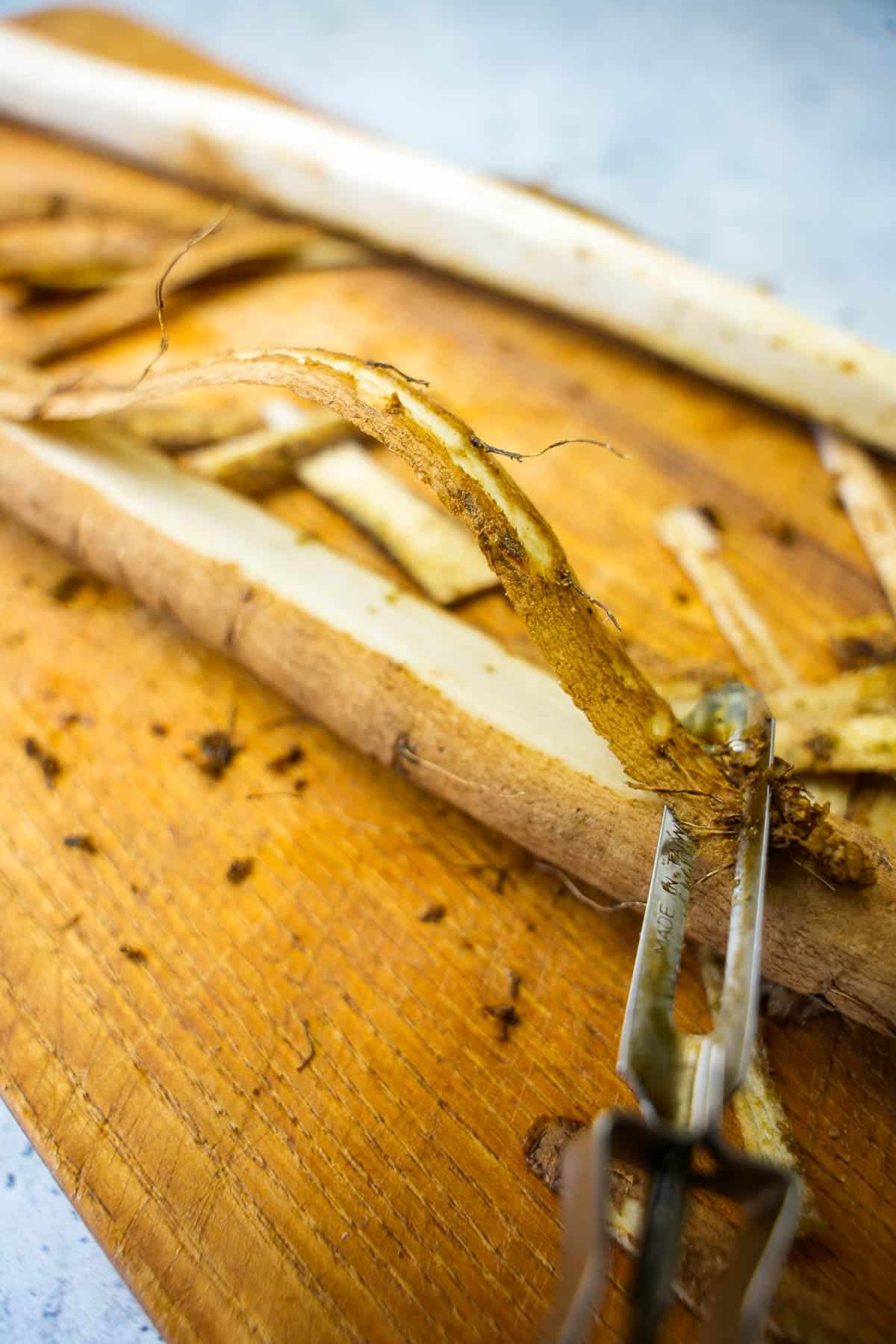
Step 1
Scrub the burdock root thoroughly to remove any dirt or impurities. Using a sharp knife or vegetable peeler, peel off the outer skin of the burdock root.

Step 2
Cut the burdock root into sections about four inches (10 centimeters) in length.
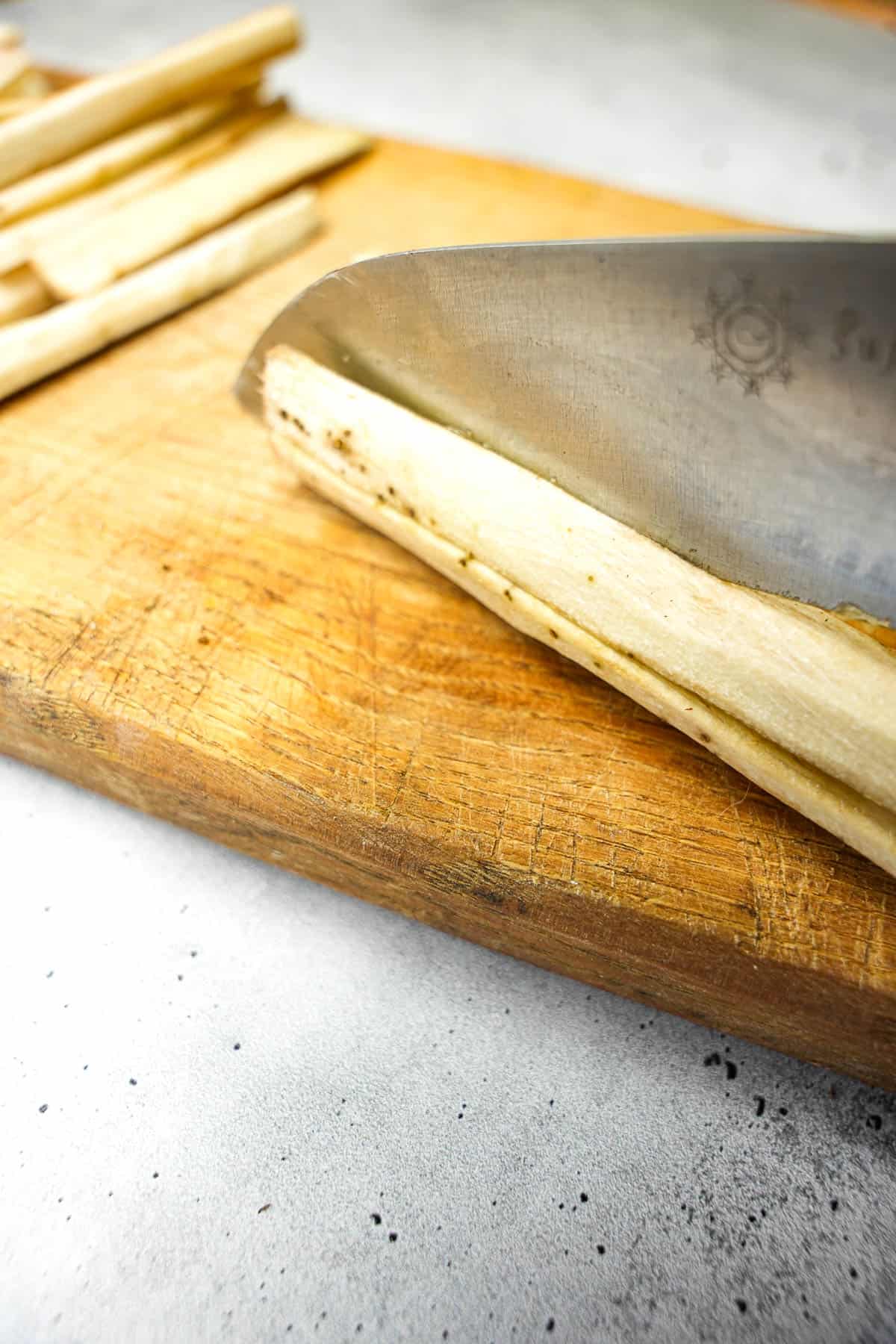
Step 3
Cut the sections into long, thin strips.
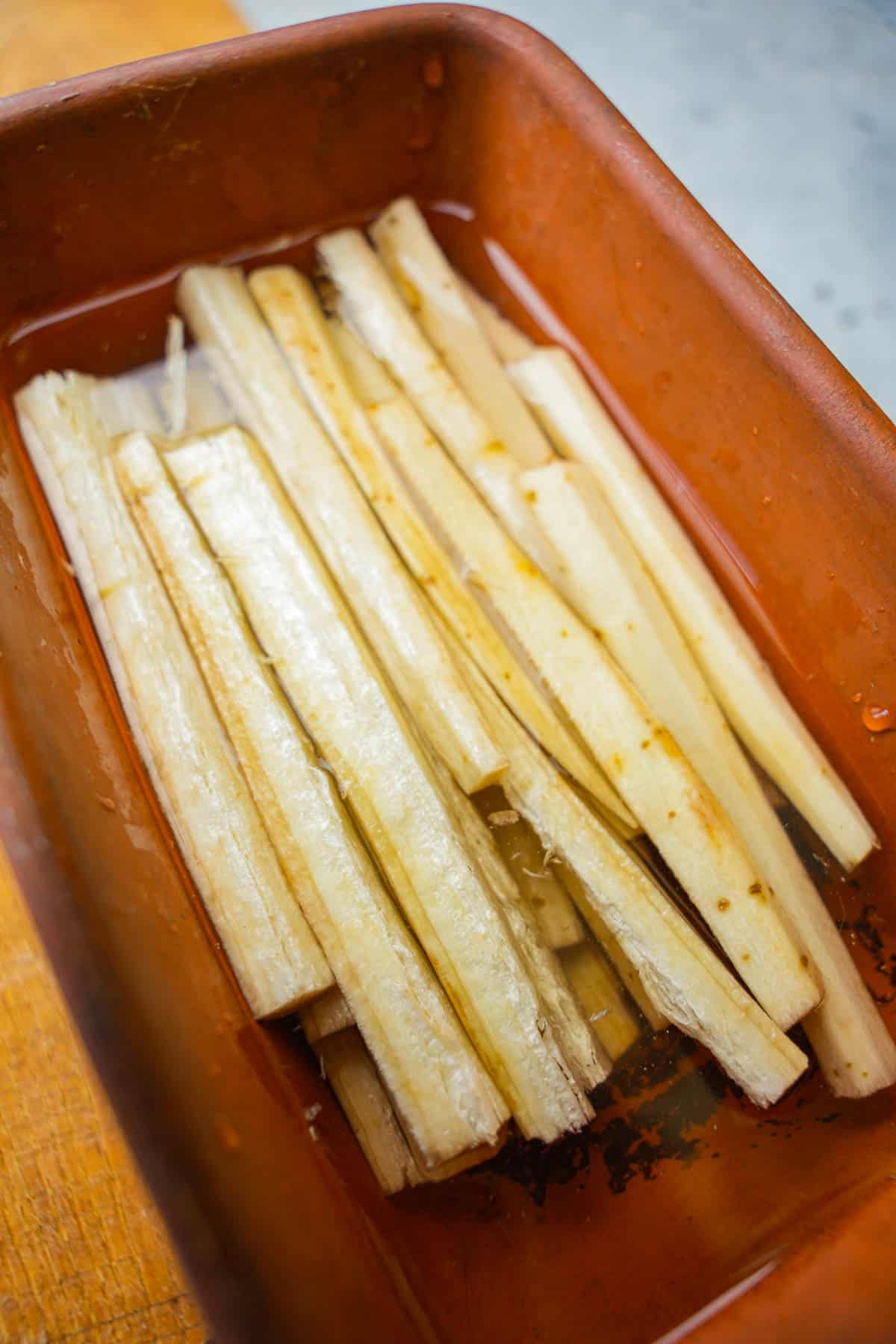
Step 4
Place the cut burdock into a bowl with 1 ½ cups of water with 2 tablespoons of vinegar to prevent browning and to draw out some of the astringent, bitter flavor from the burdock.
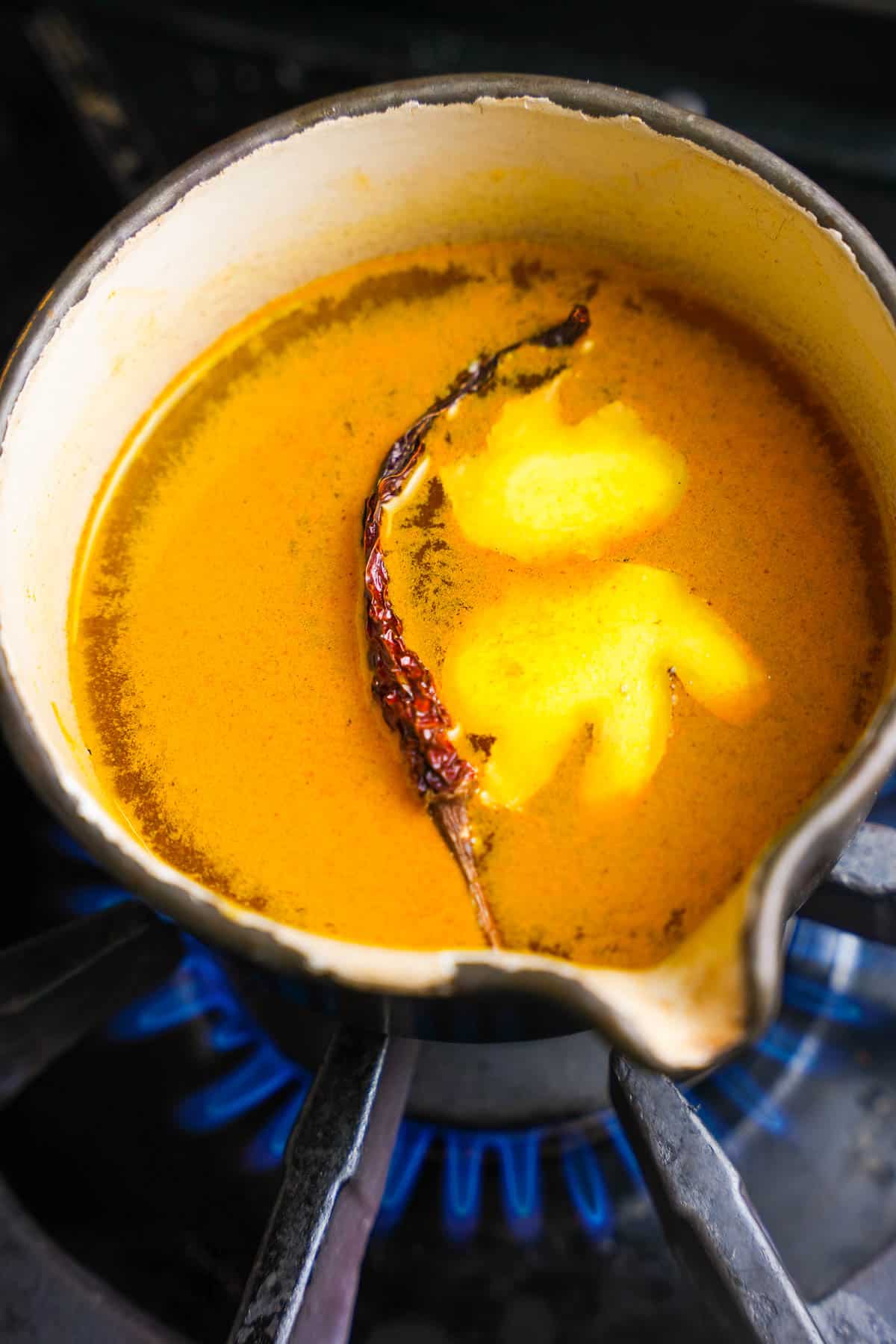
Step 5
In a pot over a high flame, bring the rest of the rice vinegar, the rest of the water, sugar, dried chili, ginger, salt, and turmeric to a boil to create the brine.
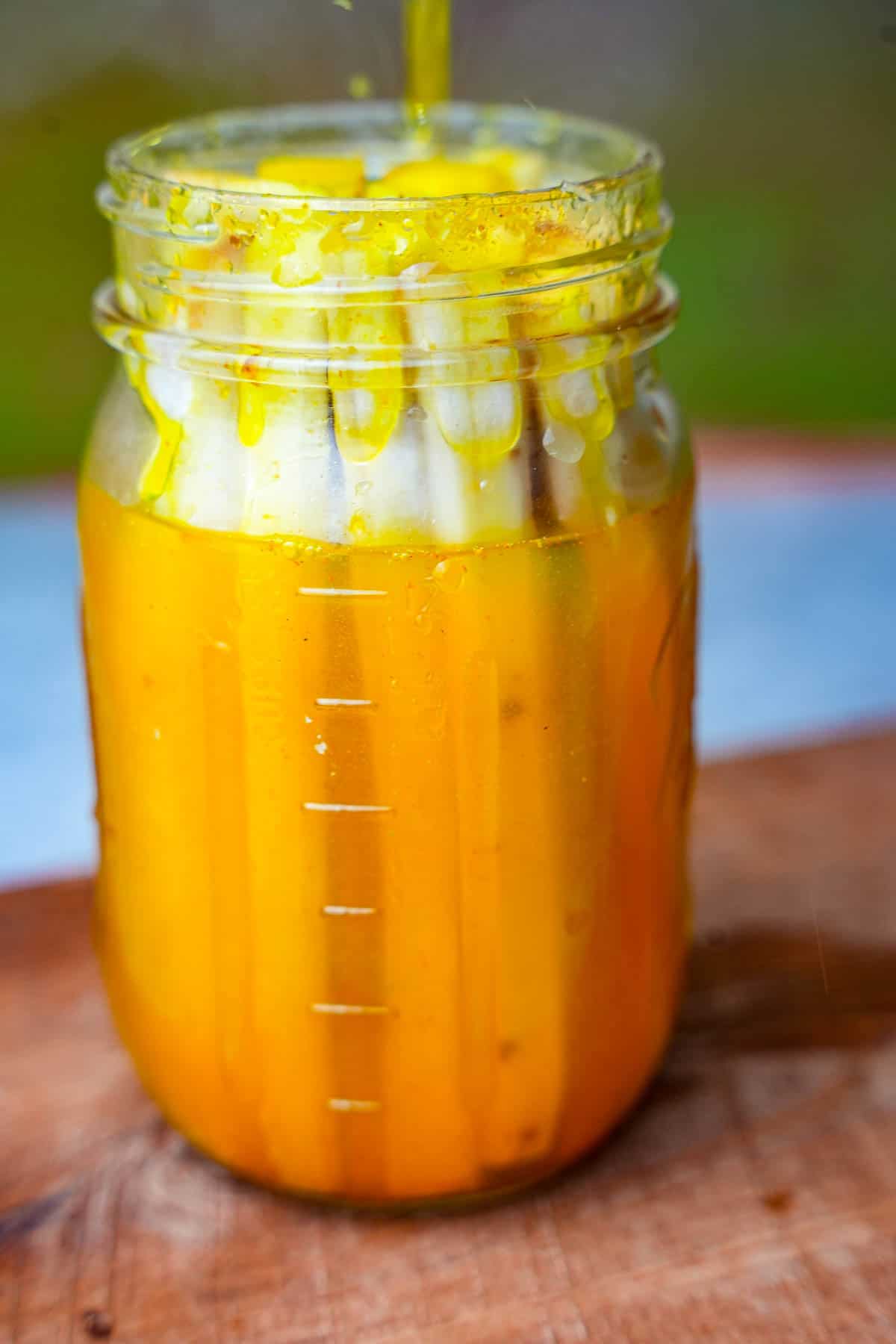
Step 6
Remove the burdock root from the water and vinegar mixture it is sitting in, and place the strips into a sterilized mason jar or heat-proof container.
Carefully pour the hot brine over the burdock root, ensuring it covers the strips completely.

Step 7
Add the cooked ginger and chili by hand to the jar, directly from the pot of brine.
Allow the Yamagobo to cool to room temperature, then cover the jar or container.
Place the jar in the refrigerator and let it pickle for at least 24 hours to enhance the flavors.
🤷♀️ What to serve yamagobo with?
- Sushi Rolls: Yamagobo is a popular filling in sushi rolls, adding a crunchy texture and tangy flavor. It pairs well with other ingredients like rice, soy sauce, wasabi, vegetables, and seaweed.
- Rice Bowls: Yamagobo makes a delicious addition to rice bowls, providing a vibrant and flavorful element. It can be served alongside cooked rice, protein such as grilled tofu, and an assortment of vegetables. Try it with my kimchi fried rice or Indonesian coconut rice!
- Salads: Pickled burdock can be thinly sliced or julienned and incorporated into green salads, grain salads, or Vietnamese rice paper salad.
- Bento Boxes: Yamagobo is commonly included as a side dish in traditional Japanese bento boxes. Its tangy flavor and colorful appearance make it an appealing addition to the overall meal.
- Garnish: Minced Yamagobo can be used as a garnish to enhance the visual appeal and taste of various dishes. It can be added on top of soups, stir-fries, noodle dishes, or even as a finishing touch to sushi platters.
- Japanese Pickled Platters: Yamagobo is often featured as part of Japanese pickled platters known as tsukemono. These platters showcase an assortment of pickled vegetables and are served as a side dish or accompaniment to a main course.
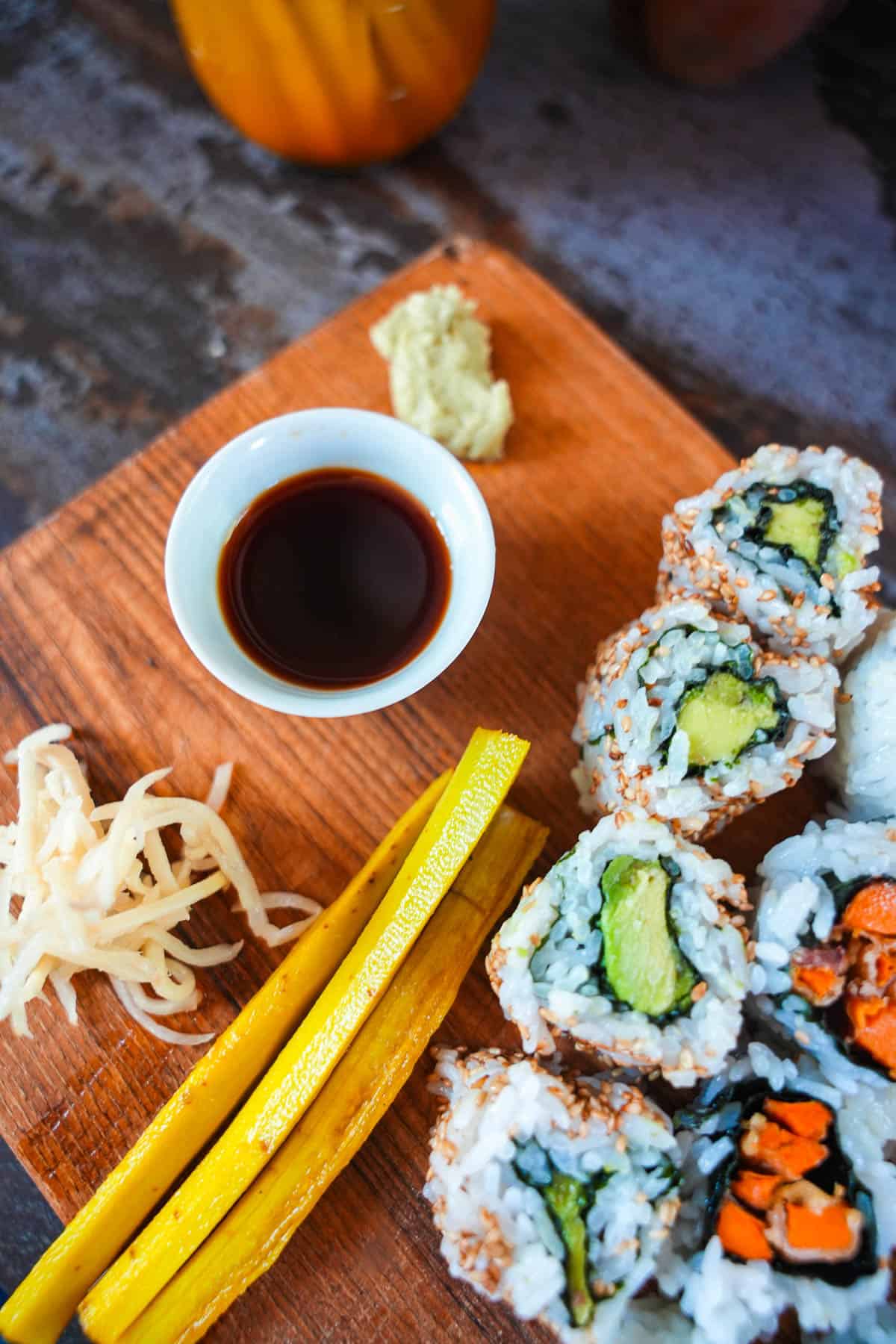
🪷The value of gobo root in Ayurveda
Ayurveda is the ancient vedic science of health (in sanskrit ayuh= lifespan, and veda= science/ “knowledge of”). In Ayurveda, burdock root, known as "Gokshura" or "Lekhaniya," is considered a valuable herb with various therapeutic properties. It has been traditionally used to address a range of health concerns and promote overall well-being.
In Ayurvedic medicine, burdock root is believed to possess the following qualities:
- Detoxification and Blood Purification: Burdock root is considered a powerful blood purifier and detoxifier in Ayurveda. It is believed to help eliminate toxins from the blood, support liver function, and promote healthy digestion.
- Skin Health: Burdock root is often used in Ayurvedic formulations and topical applications to support healthy skin. It is believed to help address skin conditions such as eczema, acne, and psoriasis due to its potential anti-inflammatory and blood-purifying properties.
- Urinary Health: In Ayurveda, burdock root is sometimes used to support urinary health. It is believed to have diuretic properties that can help flush out excess fluids from the body and support kidney function.
- Digestive Support: Burdock root is considered beneficial for digestive health in Ayurveda. It is believed to stimulate digestion, improve appetite, and help alleviate digestive discomfort.
- Joint Health: Ayurvedic practitioners may use burdock root to support joint health and address conditions related to joint discomfort. It is believed to have anti-inflammatory properties that can help reduce swelling and promote joint flexibility.
It's important to note that Ayurvedic treatments and recommendations are highly individualized and take into account a person's unique constitution (dosha) and specific health needs. Ayurvedic practitioners may combine burdock root with other herbs and ingredients to create formulations tailored to an individual's requirements.
🤷♀️FAQ
The pickling process for burdock root likely originated as a preservation technique to extend the shelf life of the vegetable. By pickling burdock root, the Japanese found a way to enjoy its unique flavor and texture even during seasons when fresh produce was scarce. This preservation method allowed people to savor the health benefits of burdock root throughout the year.
Burdock root, the main ingredient in Yamagobo, is a long, slender root vegetable that grows in various regions around the world. However, it holds a significant place in Japanese cuisine and folklore. In Japan, burdock root has been consumed for its nutritional and medicinal properties for centuries.
Yamagobo has become a staple in Japanese cuisine, particularly in traditional dishes such as sushi, tempura, and donburi bowls. Its tangy and slightly sweet taste, along with its crunchy texture, adds a delightful contrast to these dishes.
Burdock root, known as “Goboshi” (the seeds which have their own special properties are called “Niu Bang Zi”) in Traditional Chinese Medicine (TCM), holds a significant place in the ancient healing system of China. With a long history of use, it is highly regarded for its therapeutic properties and is considered an important herb in TCM.
In Chinese Medicine, burdock root is believed to possess the following medicinal qualities:
Blood and Qi Cleansing: Burdock root is valued for its ability to cleanse the blood and promote healthy circulation. It is believed to remove toxins and impurities from the body, thus supporting the overall well-being of various organs and systems.
Skin Health: In TCM, burdock root is often used to address skin conditions such as acne, eczema, and rashes. Its cooling and detoxifying properties are believed to help clear heat and toxins from the blood, which may contribute to healthier skin.
Liver Support: The liver is considered an important organ in TCM, responsible for the smooth flow of Qi (vital energy) and blood. Burdock root is believed to have a strengthening effect on the liver and gallbladder, supporting their proper function and promoting the elimination of toxins.
Lung Health: Burdock root is associated with the lungs in TCM. It is believed to help expel phlegm, clear heat, and support respiratory health. It is commonly used in formulas to address conditions such as coughs, bronchitis, and sore throats.
Kidney Support: In TCM, burdock root is believed to nourish and tonify the kidneys. It is considered beneficial for kidney health and may be used to support kidney function and address conditions related to kidney imbalances.
In TCM, burdock root is often combined with other herbs to create specific formulations tailored to an individual's needs. The combination of herbs aims to restore balance and harmony within the body.
It is important to consult with a qualified TCM practitioner or healthcare professional before using burdock root or any other herbal remedy in TCM. They can provide guidance on the appropriate usage, dosage, and potential interactions with other medications or health conditions.
Burdock root's long history of use in TCM reflects its reputation as a valuable herb in promoting overall health and well-being, particularly in relation to the blood, skin, liver, lungs, and kidneys.
Serve pickled burdock root with these:
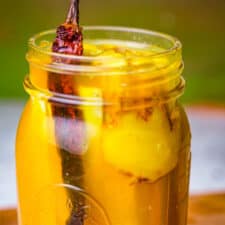
Easy Japanese Yamagobo (Fast pickled burdock root)
Equipment
- Pint jar
Ingredients
- ¾ pound gobo burdock root
- ⅔ cup rice vinegar plus an additional 2 tablespoons for brining
- ⅓ cup water plus an additional 1 ½ cups for brining
- ¼ cup sugar or other sweetener of your choice
- 1 dried chili of your choice optional
- 2 thin slices of fresh ginger
- 1 tablespoon salt
- ½ teaspoon turmeric or 1 teaspoon carrot powder for color
Instructions
- Scrub the burdock root thoroughly to remove any dirt or impurities. Using a sharp knife or vegetable peeler, peel off the outer skin of the burdock root. Cut the burdock root into thin strips, about four inches (ten cm.) in length.
- Cut the burdock root into thin strips, approximately four inches in length. This ensures easy handling and optimal texture.
- To prevent browning and enhance flavor, submerge the burdock strips in a bowl with 1 ½ cups of water and 2 tablespoons of vinegar. This also helps draw out any astringency, revealing the root's buttery taste.
- In a pot set over high heat, bring rice vinegar, water, sugar, dried chili, ginger, salt, and turmeric to a rolling boil. This aromatic brine will infuse the burdock with delicious flavors.
- Once the burdock has soaked in the water and vinegar mixture, remove it and pat it dry. The moisture will affect the pickling process, so ensure it is well-drained.
- Transfer the burdock strips to a clean and sterilized glass pint jar or container. This maintains cleanliness and prevents contamination during the pickling process.
- With caution, pour the hot brine over the burdock, ensuring all the strips are completely submerged. This ensures even pickling and discourages the growth of mold or bacteria.
- By hand, add the cooked ginger and chili to the jar directly from the pot of brine.
- Allow the Yamagobo to cool to room temperature. Then, cover the jar or container securely.
- To achieve optimal taste, place the jar in the refrigerator and allow it to pickle for a minimum of 24 hours. This allows the flavors to meld and intensify. The longer the pickling time, the more pronounced the flavors become.
Notes

Enter your email & I'll send it to your inbox. Plus, get great new recipes from me every week!
By submitting this form, you consent to receive emails from Cinnamon Snail.

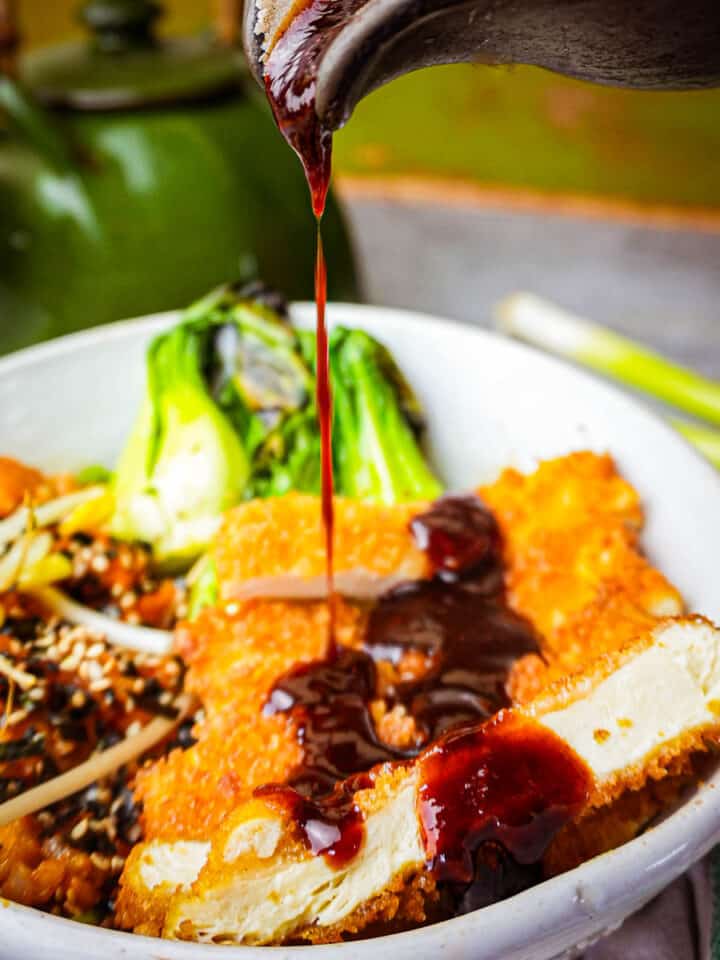
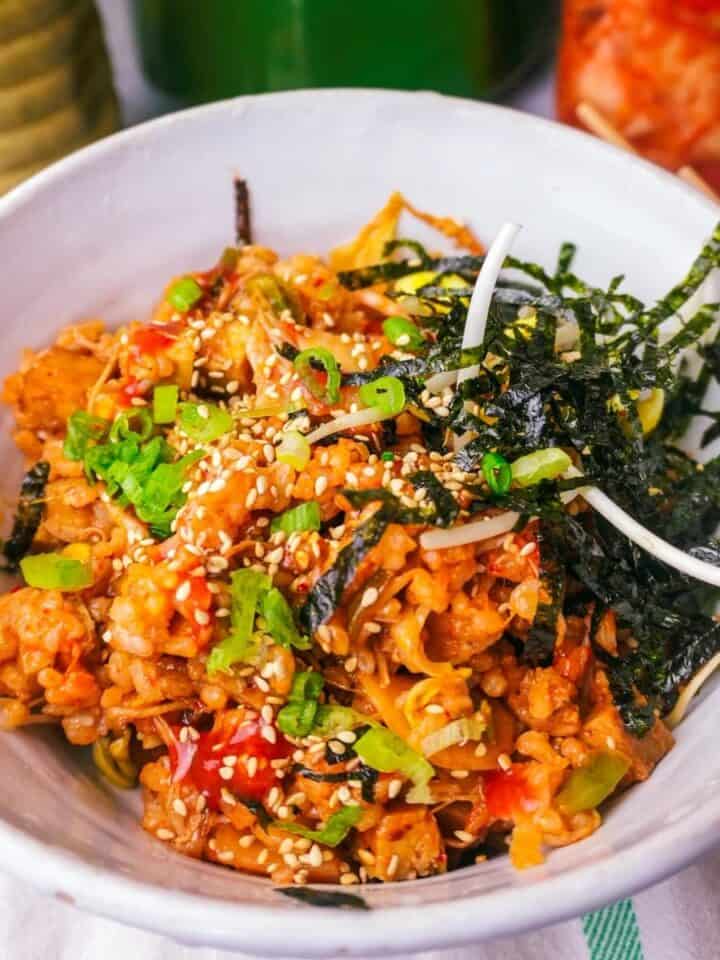
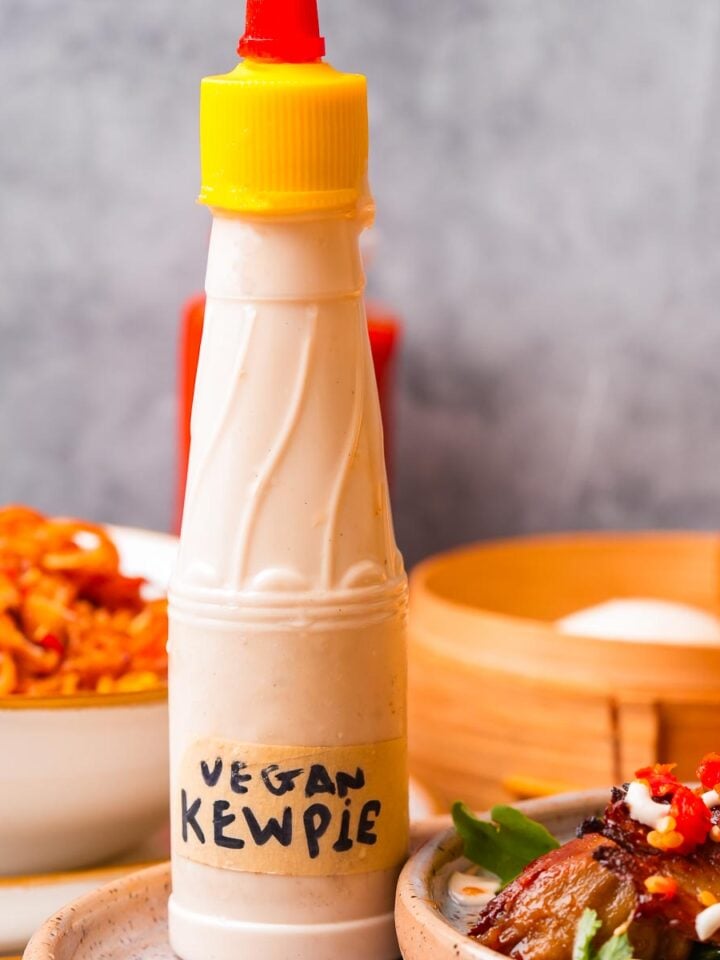





hg says
Before making this recipe, I really didn't even know what burdock was. I'd see it in the produce section in some ethnic food stores, but didn't know what it was, let alone, what to do with it. Liking adventure and trying new things, I purchased the burdock and made the recipe. It's one of my favorite pickling recipes. The texture of the burdock is great, along with the flavors. After making the dish, I actually purchased seeds and am now growing my own burdock ( or at least trying to).
Liz says
This recipe is fantastic! The brine was easy to make and was so yummy!